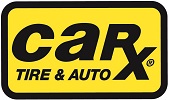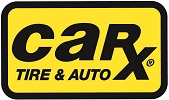Title Page
-
Conducted on
-
Prepared by
-
Franchisee
-
Market
-
Location
Phone Skills
PHONE SKILLS BEST PRACTICES
-
Manager
-
Manager
-
Review vehicle history in your shop prior to contacting the Customer, including:
-
Vehicle alerts and info on shop management software
-
Completed MPI/Technician notes
-
Total pricing for each item
-
Appointment Scheduling software available to set appointment
-
Answer all incoming Customer calls within 3 rings
-
Ensure that voice mail greetings are clear, simple and easy to understand. They should include training, vacation
-
Create a Team approach to answering incoming calls. Ensure all staff answering main line are trained to handle after hours service calls
-
Ensure all shop's staff is trained on how to handle parts inquiry calls from customers. When a customer calls and request pricing on a specific part ask if they would like service and installation. If yes transfer the call to a Consultant for complete job pricing, including taxes, fluids and fees.
-
Develop and consistently use a phone script for both incoming and outgoing calls to include:
-
Friendly greeting
-
Name of person answering or making call
-
Ask why customer is calling
-
Reason for your outgoing call
-
Always speak in a friendly, pleasant tone when answering or making calls so Customers can hear you ‘smile’ through the phone
-
Ask for Customer’s name and use it during the call
-
Ask Customer why they’re calling and offer to help them
-
Match Customer’s voice speed and volume
-
Always use polite phrases such as ’thank you’, ‘we are looking forward to your visit’, ‘please’ and ‘I understand’
-
Maintain good posture, speak clearly and with confidence so Customers can understand you
-
Always let your Customer finish talking; DO NOT interrupt
-
When leaving a voicemail message for a Customer:
-
Speak slowly and clearly
-
Pause between items or topics
-
Spell you name if needed
-
Give brief reason for your call
-
Provide a call back phone number
-
Repeat your name and phone number
-
Take message if someone is unavailable to speak with a Customer, the message should include:
-
Customer’s name
-
Time of call
-
Who Customer is calling
-
Customer’s phone number
-
Reason for their call
-
Best method or number to reply to the Customer
-
Read message information back to Customer to confirm
-
If you take a message, share Customer call information immediately with other members of your dealership staff
-
DO NOT eat or drink while talking with a Customer on the phone
-
DO NOT multi-task or become distracted during a Customer call
-
When setting Customer appointments:
-
Prioritize customer appointment setting by customer convenience, while attempting to fill current “now shows” and other gaps in the schedule
-
Ask open-ended questions to offer choices
-
Use the shop management software Scheduler for all service appointments
-
Confirm all Customer information and update changes on shop
-
Set appointment times at a minimum of 15 minute intervals
-
Ask Customer for permission before placing them on hold
-
Customer placed on hold should not exceed 30 seconds. If more time is needed offer to call the Customer back
-
Always thank the Customer for waiting on hold
-
Ask Customer for permission before transferring the call to another part of your dealership
-
Remain on the line with the Customer while the call is being transferred
-
Introduce the Customer during call transfer and provide a brief reason for the Customer’s call
-
Ask Customer for permission before leaving a successfully transferred call
-
Always ask Customer if all their questions have been answered prior to ending each call
-
If the Customer’s questions have not been fully answered, set a time to use the Customer’s preferred method or number for you to respond
-
Always thank the Customer for their call prior to ending the call
Conflict Resolution Over The Phone
-
If a Customer calling the store is angry or upset:
-
Remain calm and DO NOT take it personally
-
DO NOT interrupt the Customer
-
Listen and allow the Customer to vent
-
Empathize as appropriate
-
Apologize if necessary
-
Offer a reasonable solution
-
Obtain Customer’s agreement with any solution
-
Escalate the call to higher level of management if solution is NOT acceptable to Customer
-
When answering Customer questions:
-
Maintain strong knowledge of vehicles and feature operation
-
Allow Customer to explain their question
-
Repeat question back to Customer to confirm understanding
-
Always keep the conversation positive and professional
-
Promise only what is correct and realistic
-
Use metaphors to help Customer understand
-
At the end of each call, ask Customer if all questions have been answered, review any next steps and thank the Customer for calling. If you called, thank the Customer for taking time to speak with you
-
Manager
-
Trainer















